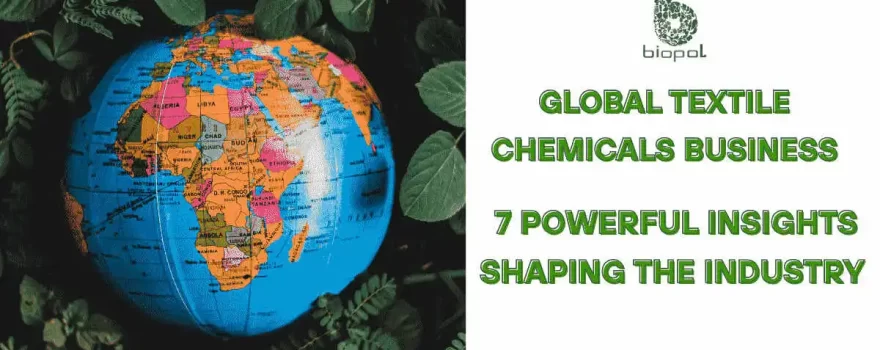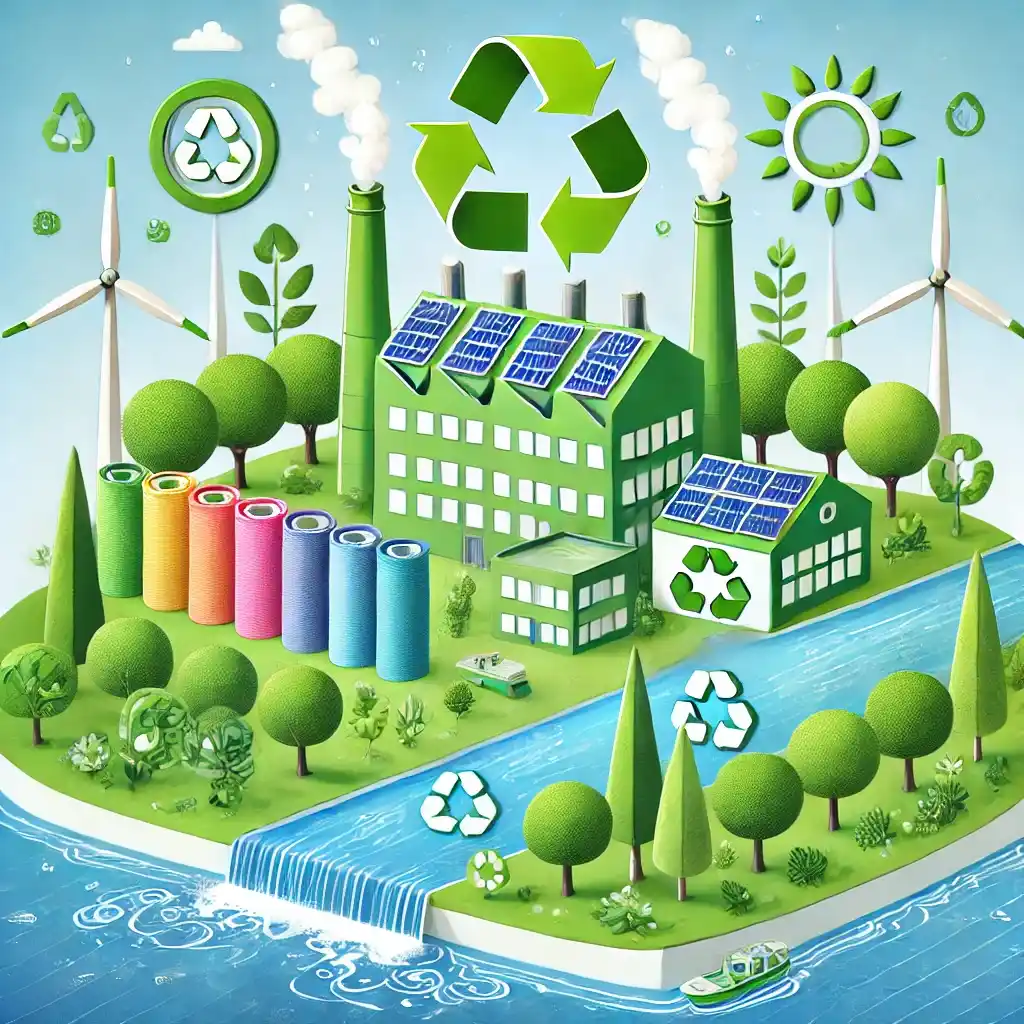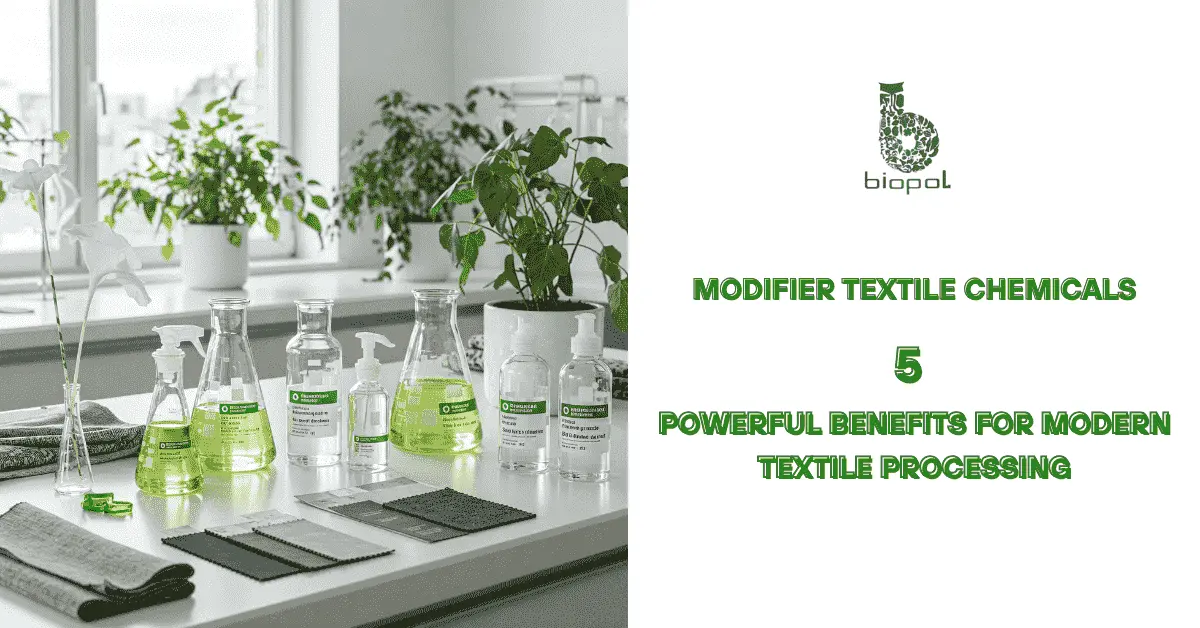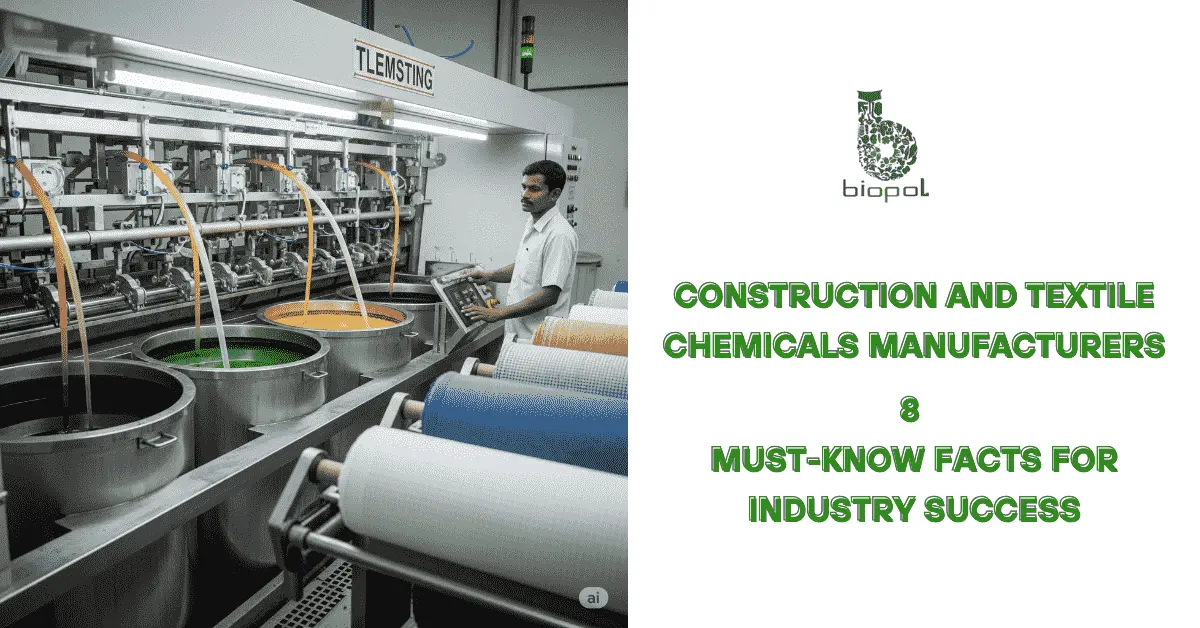
Global Textile Chemicals Business is essential to the global textile manufacturing process, offering a diverse array of products that improve the performance, appearance, and longevity of fabrics. These chemicals are crucial throughout the entire textile production process, from pre-treatment and dyeing to finishing and printing.
Table of Contents
Global Textile Chemicals Business: Role in Textile Manufacturing
The Global Textile Chemicals Business plays an enabler’s role in the entire global textile manufacturing universe. It empowers the industry with its amazing contribution of turning dull, weak, coarse fabrics into stylish, modern, safe, strong, and sustainable sensory experiences. It does so by:
- Dyeing and Printing: Chemicals like dyes, pigments, and printing inks are integral in imparting vibrant colors and intricate patterns to fabrics.
- Finishing: Finishing agents such as softeners, water repellents, and flame retardants are employed to enhance texture, functionality, and performance.
- Pre-treatment: Processes such as scouring, bleaching, and desizing rely on specific chemicals to prepare fibers for subsequent stages, ensuring optimal quality and consistency.
Global Textile Chemicals Business: Significance
The global textile chemicals business is a critical driver of the textile industry’s growth and innovation. It promotes the evolution of high-performance textiles employed in garments, residential furnishings, and industrial sectors. Furthermore, it plays a substantial role in the economic growth of manufacturing hubs across various regions.
Key Regional Markets
| Region | Characteristics |
| Asia-Pacific | It leads the market as a result of its significant manufacturing infrastructure, especially in regions such as China, India, and Southeast Asia. |
| Europe | Known for its advanced technologies and high-quality chemicals, Europe remains a mature yet innovative market. Its emphasis on sustainability and niche applications contributes to its competitive edge. |
| North America | With a strong focus on innovation and sustainable practices, North America plays a significant role in shaping global trends. The region emphasizes high-performance textiles and eco-friendly production methods. |
| Emerging Markets (Latin America, Africa, and the Middle East) | Witnessing rapid growth due to rising disposable incomes, expanding populations, and increasing demand for apparel and home textiles. |
Key Growth Drivers
| Driver | Description |
| Rising Demand for Apparel | Population growth and higher disposable incomes are fueling a surge in apparel demand. Consumer preferences for diverse styles and functional textiles further drive innovation. |
| Expansion of Home Textiles | The home furnishings segment, including curtains, upholstery, and bedding, is experiencing robust growth, creating significant opportunities for textile chemicals. |
| Technical Textiles | Applications in automotive, healthcare, construction, and sports have expanded the need for specialized textile chemicals designed for performance and durability. |
| Sustainability Focus | Consumers and governments are increasingly advocating for eco-friendly practices, pushing manufacturers toward sustainable chemical solutions. |

Challenges and Opportunities
Challenges
- Environmental Concerns: Regulations to minimize the environmental footprint of textile chemicals necessitate a shift to biodegradable and sustainable solutions in the Global Textile Chemicals Business.
- Regulatory Challenges: Strict compliance requirements across various regions present significant obstacles for manufacturers, especially for smaller entities.
- Market Rivalry: The competitive environment in the Global Textile Chemicals Business is marked by the coexistence of multinational corporations and local firms, which intensifies the pressure on pricing strategies and innovation efforts.
Opportunities
- Sustainability Leadership: Developing biodegradable and eco-friendly chemicals can set companies apart in a competitive Global Textile Chemicals Business market.
- Innovation in Performance Textiles: The rise of performance-based fabrics opens avenues for specialized chemicals that enhance functionality and comfort.
Key Segments in Textile Chemicals
| Segment | Description |
| Dyes | Reactive dyes for cotton and cellulosic fibers, Disperse dyes for synthetic materials like polyester, Acid dyes for wool, silk, and nylon, Vat dyes for high colorfastness. |
| Auxiliaries | Wetting agents, leveling agents, and anti-foaming agents that ensure efficient dye application. |
| Finishing Agents | Softeners, water repellents, and flame retardants to improve texture and safety. Antimicrobial agents for healthcare textiles. |
| Essential Chemicals | Bleaching, scouring, and sizing agents used in pre-treatment. |
Technological Advancements
- Nanotechnology: Nanoparticles enhance properties like water repellency and stain resistance. Nanofibers improve fabric strength and breathability.
- Digital Printing: This method revolutionizes textile design with precision, reduced environmental impact, and faster production cycles.
- Biotechnology: Enzyme-based solutions reduce reliance on harmful chemicals, ensuring eco-friendlier processes in the Global Textile Chemicals Business.
Consumer Trends
| Trend | Description |
| Sustainable Textiles | Eco-conscious consumers prefer organic, recycled, and biodegradable fabrics with minimal environmental impact. |
| Performance Textiles | Activewear and sportswear are sought after for their functional characteristics, which encompass moisture-wicking properties, UV protection, and long-lasting durability. |
| Performance Textiles | Growing interest in tailored finishes, from water repellency to antimicrobial properties, drives demand for specific textile chemicals. |
Regional Insights
| Region | Characteristics |
| Asia-Pacific | The region’s cost-effective manufacturing and robust supply chain sustain its dominance. |
| Europe | Advanced research and a focus on green technologies underscore Europe’s position as a leader in sustainable textile chemicals. |
| North America | A notable characteristic of the North American market is its pronounced commitment to innovation and sustainable environmental practices. |
| Emerging Markets | The regions of Latin America, Africa, and the Middle East are undergoing development marked by a surge in investments in the textiles and chemicals industries. |
Role of Sustainability

Sustainability has become a cornerstone of the textile chemicals industry. Key initiatives include:
- Eco-friendly Innovations: Bio-based chemicals from renewable resources, Water-efficient dyeing processes.
- Biodegradable Solutions: Development of chemicals that decompose naturally without harming ecosystems.
- Circular Economy Principles: Emphasis on recycling and minimizing waste throughout the supply chain.
Regulatory Landscape
Observance of regulations like REACH in Europe and CPSIA in the United States plays a significant role in promoting environmental safety and safeguarding consumer interests. However, meeting varying standards across regions poses challenges. Companies must prioritize transparency and adhere to evolving regulations to maintain consumer trust and operational integrity.
Competitive Landscape
- Major Players: BASF SE, Archroma, Clariant, Biopol Chemicals Limited, Huntsman Corporation, Evonik Industries
Following regulations such as REACH in Europe and CPSIA in the United States is crucial for ensuring both environmental safety and the protection of consumers.
Market Forecast
The worldwide market for textile chemicals is expected to witness significant expansion, driven by technological advancements, rising sustainability demands, and the emergence of new markets. Opportunities abound for companies embracing eco-friendly practices and cutting-edge technologies.
Conclusion
The global textile chemicals business is a dynamic and vital sector driving innovation and sustainability in textiles. Key takeaways include:
Various industries are served by the market’s extensive array of applications and products.
- Regional markets like Asia-Pacific and Europe lead in production and innovation.
- Challenges such as environmental concerns and regulatory compliance are reshaping the industry.
- The future belongs to companies that can innovate responsibly, meet consumer expectations, and prioritize sustainability, ensuring the long-term growth and resilience of this essential market.
Also Read: Textile Chemicals: The Secret Sauce Behind Your Clothes

